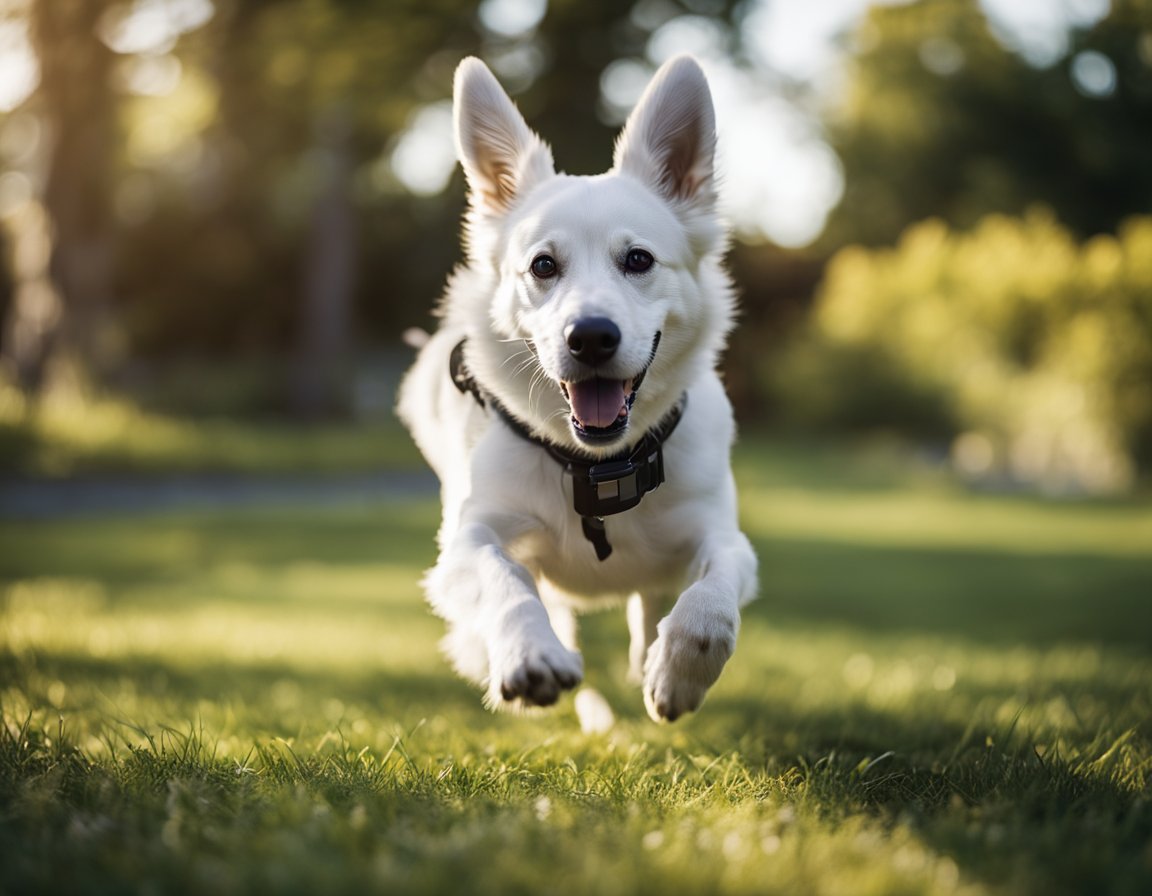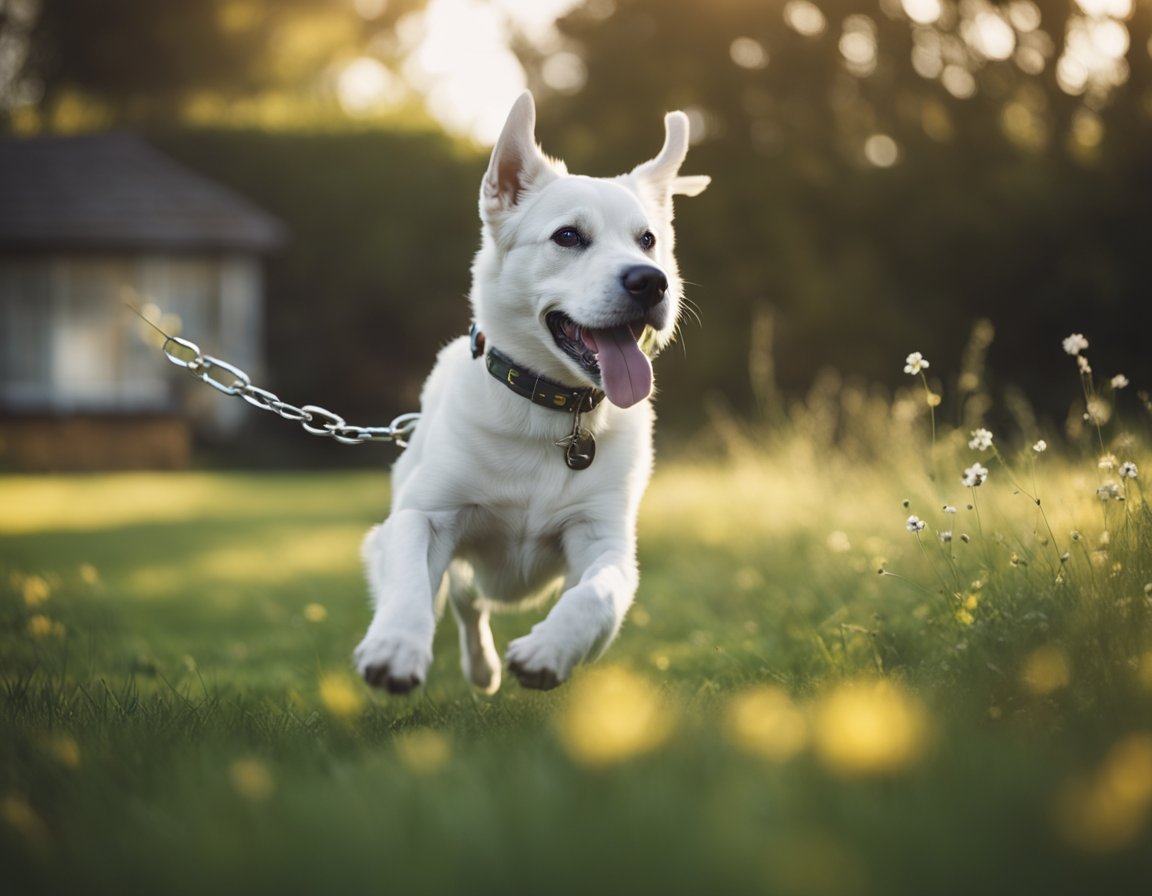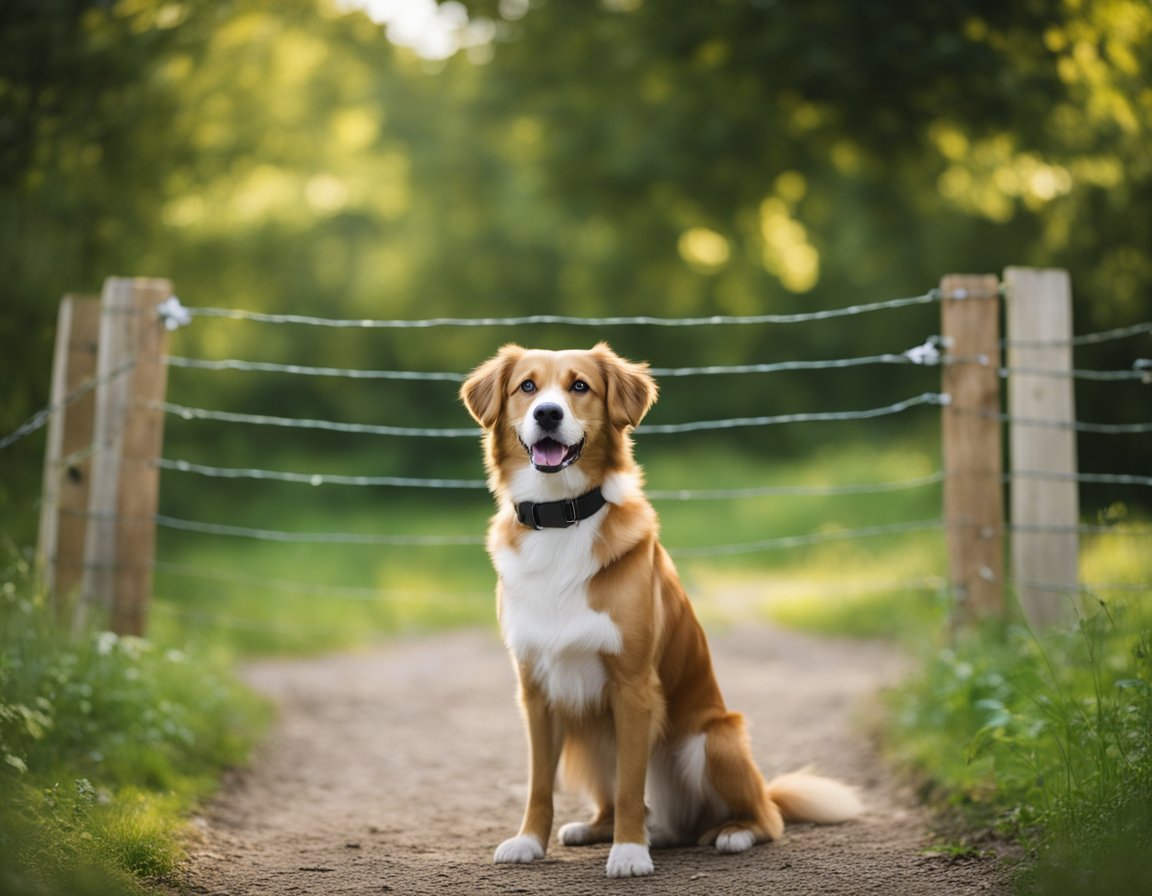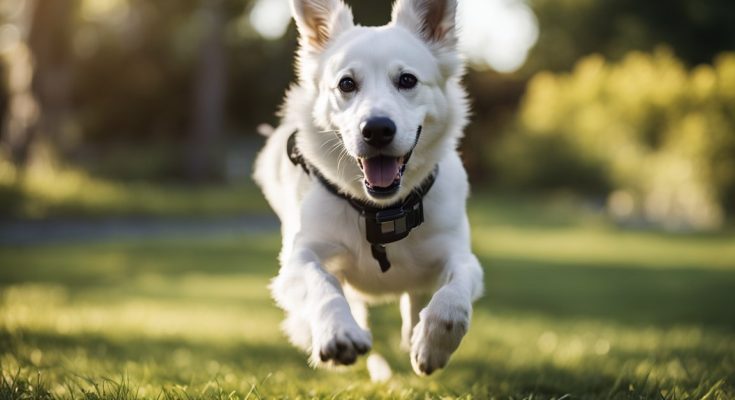A wireless invisible dog fence is a system designed to keep your pet within a set boundary without the need for a physical fence. This type of containment system uses radio frequency or GPS to create an invisible perimeter around your property. When your dog approaches the designated boundary, the collar receiver worn by your pet emits a warning sound. If your dog continues closer to the edge of the boundary, the collar gives a mild electric correction to signal them to stay within the safe zone.

Understanding how a wireless invisible dog fence works starts with recognizing its two main components: the transmitter and the collar receiver. The transmitter plugs into an indoor power outlet and emits a radio signal that radiates outward to form a circular boundary. You can adjust the size of this boundary typically up to half an acre. Your dog’s collar synchronizes with the transmitter, and if your dog nears the boundary, the receiver reacts as programmed, either by emitting a sound, vibration, or a safe static correction.
Wireless fences are valued for their portability and ease of set-up, making them suitable for people who rent their homes or travel frequently with their pets. There are different types and brands of fences which offer various features such as adjustable settings to accommodate different breeds and temperaments, ensuring the safety and well-being of your pet. It’s also important to pair the use of an invisible fence with proper training for your dog to understand the boundaries and commands, creating a safe environment in your yard without the constraints of a physical fence.
Understanding the Basics of Wireless Invisible Dog Fences
Wireless invisible dog fences offer a blend of safety and freedom for your pet. They allow your dog to roam within predefined boundaries without the need for a physical barrier.
Components of the System
- Transmitter: This unit plugs into a standard outlet and emits a radio signal to establish the boundary.
- Receiver Collar: Your dog wears this collar, which receives the signal from the transmitter. If your dog approaches the boundary, the collar beeps as a warning and can deliver a static correction if the warning is ignored.
- Boundary Flags: Often used during the initial training stages, these flags provide a visual marker for the edges of the boundary area.
- Power Adapter: For the transmitter, ensuring the system remains active without interruption.
Types of Wireless Dog Fences
- Wireless Radio-Frequency Systems: They create a circular boundary around the transmitter. The range can usually be adjusted to fit your yard’s size.
- GPS-Based Systems: These do not require a transmitter and work via satellite, defining boundaries more flexibly and with greater coverage.
Wireless invisible dog fences are ideal solutions for keeping your dog within a safe area without impacting the aesthetics of your yard. They require a consistent training approach for your dog to understand and respect the set boundaries.
Installation Process
The installation process of a wireless invisible dog fence is straightforward, focusing on setting up the transmitter, defining the boundary, and visual aids for training your dog.
Selecting the Location
Firstly, choose a central location for the transmitter. The location should be:
- Close to a power outlet
- Protected from the elements
- Near the area you want to enclose for your dog.
This spot dictates the area your dog will have access to, so ensure it’s free from large metal objects or electronic devices that could interfere with the signal.
Setting Up the Transmitter
Once you’ve chosen the location:
- Connect the transmitter to a power source.
- Adjust the boundary width on the transmitter to your desired range.
- Make sure the transmitter is mounted on a non-metal surface to avoid signal distortion.
Note that the transmitter will create a circular boundary around the location, so the placement directly affects your dog’s movement area.
Placing the Boundary Flags
Placement of boundary flags is crucial as they act as visual markers for your dog. To place them correctly:
- Walk to the edge of the signal field where your dog’s receiver collar beeps.
- Plant a flag directly at this location.
- Repeat this process around the circumference of your boundary. Flags should be placed 10 feet apart.
It’s important to use these flags for training your dog to recognize the boundary. After training, you may gradually remove the flags.
Training Your Dog

When beginning to train your dog with an invisible fence, it is crucial to ensure a systematic approach to familiarize your dog with the new boundaries while using a correction collar. Consistent reinforcement of boundaries will create lasting habits and safe confines for your pet.
Introducing the Fence to Your Dog
Initially, you want to establish a clear understanding for your dog of where the fence’s boundaries are. This is typically done using flags or other physical markers. As described in Training Your Dog to Use an Invisible Fence, these flags will serve as a visual cue for your dog to recognize the perimeter that they should not cross. During the initial phase, it’s often recommended to keep your dog on a leash and walk them around the boundary so they can begin to understand the limits through repetition and consistency.
Using the Correction Collar
The correction collar is a vital component of the invisible fence. When your dog approaches the invisible boundary, the collar will emit a warning beep. If they continue, the collar delivers a mild static correction. The static correction is not harmful but is meant to deter your dog from crossing the boundary. It’s important that the collar is correctly fitted, with the contact points touching your dog’s skin; otherwise, the system will not function as intended.
- Proper Collar Fit:
- Ensure the contact points touch your dog’s skin.
- The collar should be snug but not too tight.
- Collar Response:
- Warning: A beep when approaching the boundary.
- Correction: A static correction if they continue toward the boundary.
Reinforcing Boundaries
After your dog has been introduced to the boundary and understands the function of the correction collar, reinforce these boundaries through training exercises. This involves allowing your dog to approach the boundary and experience the warning signal, and if necessary, the static correction while guiding them to retreat from the area. This practice helps in Teaching the dog consequences of ignoring these warning signals and that staying within the set boundaries is a positive behavior that will not result in correction. It is essential to praise and reward your dog for retreating from the boundary, reinforcing the behavior you wish to see.
How the Fence Operates

A wireless invisible dog fence keeps your pet within a defined space without the need for a physical barrier. By using a combination of signal transmission and boundary zone activation, your dog can safely enjoy outdoor freedom while you maintain peace of mind.
Signal Transmission
The heart of a wireless dog fence is a signal transmitter that emits a radio frequency. This transmitter is usually placed in your home and creates an invisible boundary in a circular shape around your property. You can adjust the range of this signal to suit the size of your containment area, ensuring your dog stays within the parameters you choose.
Boundary Zone Activation
Once the boundary is set, your dog wears a special receiver collar. This collar detects the signal from the transmitter. As your dog approaches the boundary, the collar reacts. Initially, it will emit a warning beep. If your dog continues closer to the edge, the collar will deliver a static correction. This correction is not harmful but is sufficient to deter your pet from straying beyond the boundary. The static correction levels are typically adjustable to accommodate the sensitivity and training stage of your dog.
Performance Considerations

When evaluating wireless dog fences, understanding their effectiveness and operational constraints is essential for ensuring your pet’s safety.
Reliability of Wireless Fences
Wireless invisible fences are dependent on a stable signal to function effectively. Strong signals can consistently keep your dog within the designated boundaries. However, if the signal falters, there’s a risk that your pet might escape. A low battery on the collar or environmental factors can influence reliability. It’s important to choose a system known for a robust signal and to maintain it as recommended.
Limitations and Interference
Various factors can cause interference with the performance of an invisible fence. These include:
- Metal objects: Large metal objects can obstruct the signal, creating blind spots where your dog can wander off.
- Topography: Hills or slopes on your property could impact the signal range and consistency.
- Dense foliage: Heavy brush or thick forested areas may reduce signal strength.
Physical barriers, such as walls, can also affect how well the signal penetrates, causing the boundary to be less defined. It’s critical to consider these limitations when deciding if a wireless fence is suitable for your property.
Suitability for Different Dog Sizes
When considering a wireless invisible dog fence, it’s essential to understand how the system can be adjusted to accommodate the size of your dog. These fences can be suitable for both small and larger breeds, as long as the settings are correctly adjusted.
Adjusting for Small Dogs
For small dog invisible fence wireless systems, the collar’s strength and the boundary’s width must be set appropriately. Small dogs require:
- Lighter stimulation settings: Preventing overcorrection, which could cause fear or harm.
- Narrower boundaries: Ensuring they don’t have to travel too far before they receive the warning signal.
Understanding the Impact on Larger Breeds
Conversely, larger breeds might need:
- Stronger correction levels: Larger dogs may not notice lower levels due to their size and higher pain tolerance.
- Wider boundary zones: Offering more room to roam before reaching the limit, as they cover more ground with each step.
By tailoring the wireless fence parameters to your dog’s size, you ensure their safety and comfort while maintaining the effectiveness of the boundary system.
Maintaining Your Invisible Fence
Keeping your invisible dog fence functioning effectively involves consistent maintenance. It’s imperative to perform regular inspections and ensure all components, such as batteries and power sources, are in optimal condition.
Regular Check-ups
To maintain the performance of your invisible fence, it’s vital to conduct regular check-ups. This involves:
- Inspecting the Transmitter: Confirm the power light is on and there are no unusual indicators suggesting malfunctions.
- Boundary Wire Inspection: Walk your fence’s perimeter to check for any signs of wire damage or breaks, which can interrupt the system’s operation.
Battery Replacements and Power Issues
Battery replacement is a critical aspect:
- Collar Batteries: Replace them as recommended by the manufacturer, which is typically every 3 to 12 months. This ensures your dog’s collar will activate upon approaching the boundary.
For power issues:
- Transmitter Power Supply: Make sure the transmitter is plugged into a reliable power source and is not experiencing any power outages or surges that could impact functionality.
Frequently Asked Questions
These questions address common concerns and technical aspects of how a wireless invisible dog fence operates, ensuring your understanding of its functionality and limitations.
What is the principle behind the functioning of a wireless invisible dog fence?
A wireless invisible dog fence uses a radio signal that is transmitted from a central unit to a receiver on your dog’s collar. When your dog approaches the designated boundary, the collar receives the signal and emits a warning sound followed by a mild electric shock if they get too close.
Can invisible fences successfully contain larger breeds of dogs?
Yes, invisible fences can successfully contain larger breeds. The key factors are proper training and setting the right level of correction on the collar to effectively deter them from crossing the boundary.
How does an invisible fence maintain its boundary across areas like driveways?
For areas like driveways, an invisible fence can maintain its boundary by running the wire across the driveway in a shallow groove or beneath the surface. The signal from the wire creates the boundary, which the dog learns not to cross.
Are GPS-based wireless dog fences effective for pets?
GPS-based wireless dog fences are effective to a degree, but they can have limitations such as inconsistent boundaries due to GPS signal fluctuations and environmental interference.
What occurs with a wireless dog fence system when there is a power outage?
During a power outage, the central unit of a wireless dog fence system will not function, and hence, the boundaries it maintains will be inactive. Some systems may have backup batteries to prevent this issue.
What is the maximum range covered by a wireless dog fence?
The maximum range covered by a wireless dog fence varies with the model and the manufacturer, but it typically can cover an area of up to 25 acres, ensuring pets have ample space to play while remaining safely contained.




